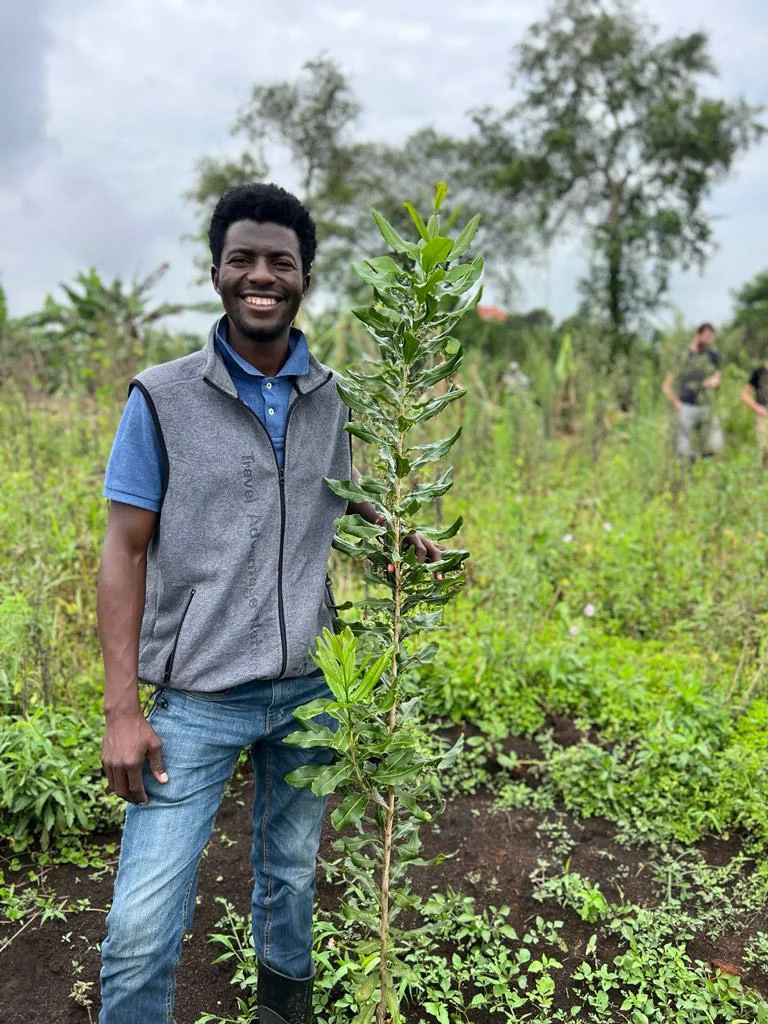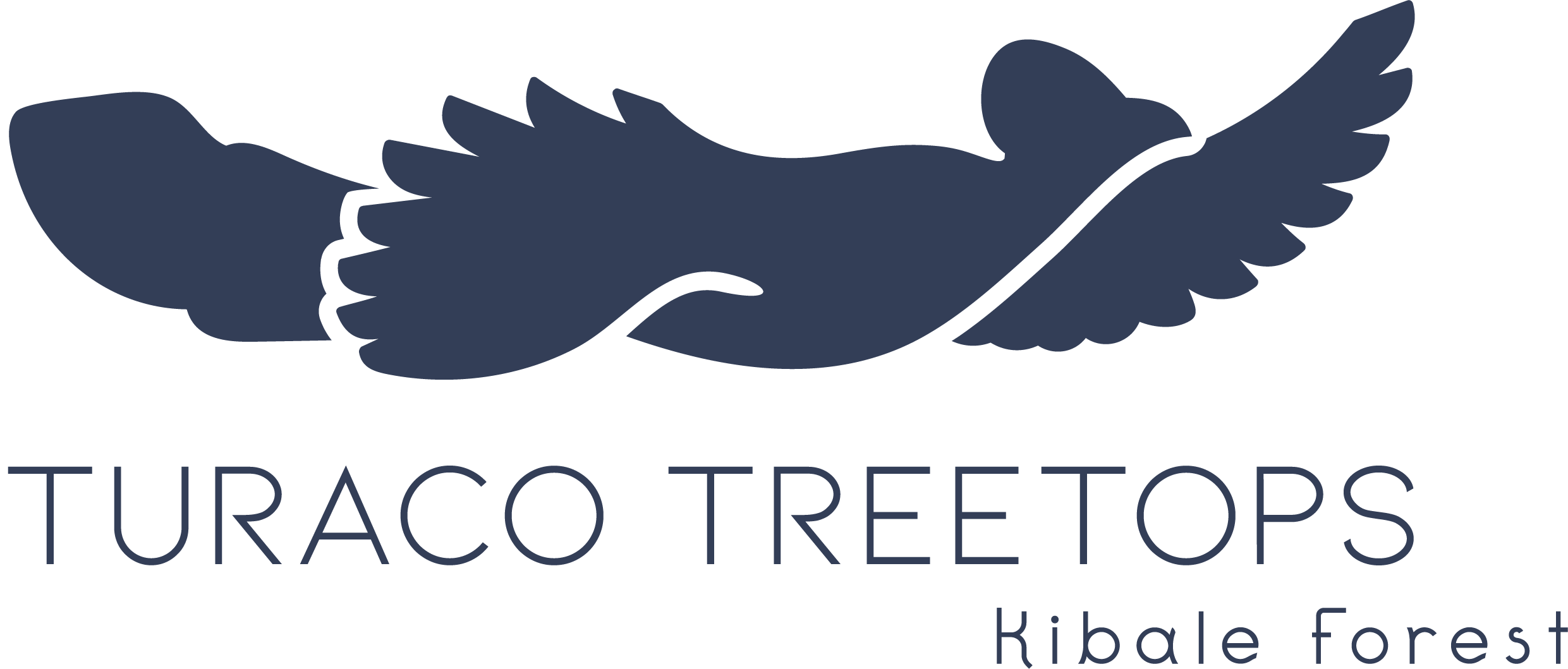
“Planting natural forests and helping them grow, is a labour of love”
Says Rushongoka Wa-Mpiira, who joined the Chris Roberts Forest Foundation (CRFF) 1.5 years ago. He is currently focusing most of his work on tropical forest restoration and regenerative agroforestry on the buffer zone around Kibale forest.
“I am a farm boy, inspired as a child by the magic of forests and mountains. I prefer to work the land than sit behind the computer.” says Rusho, who read Agricultural Business Management at Makerere University in Kampala. Three years ago, he decided to leave the capital and moved to Fort Portal, the town closest to Kibale Forest some 300km west of Kampala. There, he could directly get involved in local reforestation projects and support individuals and local organizations to ‘grow better forests’ including CRFF.
“I like the foundation’s long-term vision to strengthen the buffer zone around Kibale Forest. Kibale National Park measures 766 square kilometres; and that’s quite sizable. CRFF has a framework within which we can achieve big things by restoring the forest buffer zone working with local family farmers.”
CRFF has started a small pilot to work with ten farming families supporting them to farm regeneratively on the forest buffer zone. The foundation uses a regenerative agroforestry model with perennial crops that allows farmers to generate more income than their seasonal maize and beans. The farmers commit themselves to supporting the protection of Kibale Forest and receive a financial incentive for up to two years, while their trees are growing. Rusho believes that “for the CRFF buffer zone restoration model to work, there has to be to be something in it for the farmers. With our agroforestry model we can support family farmers to improve their incomes all the while regenerating soils, protecting the forest, and locking away carbon in the process.”
The current pilot with ten families is made possible with financial support from Wagagai, one of the world’s largest flower propagation companies and German Development Bank DEG. “The scale of the project is still relatively small, but we are learning a lot quickly and will apply these lessons to bring the restoration of the Kibale forest buffer zone to scale in the few coming years.” Rusho says.
Demonstration farm
CRFF’s 40-acre (16 hectares) demonstration farm plays an important role in knowledge generation and transfer to the family farmers. Crops like coffee and macadamia are intercropped with trees that naturally grow in the forest.
About a year and a half ago, the farm-site was an open piece of farming land that was used to grow seasonal crops season in season out and the soil was getting degraded. “Now it’s coming back to life” says Rusho on his way to meet the field staff at the farm. In a few months they expect a small harvest of the first coffee cherries, only sixteen months after initially planting the seedlings of clonal robusta.
Rusho and his local team of Mahango Boys planted 750 coffee trees and 450 macadamia trees during the 2022 October-November planting season. An additional 1,000 coffee trees are planned to be planted in this 2023 planting season. The farm is also host to about 1,000 native forest trees that are either growing by natural regeneration or intentionally planted through enrichment planting. Initially a team of seven, the Mahango Boys from the nearby Mahango village have been instrumental in the establishment of the demo farm; providing the much-needed and crucial farm labour for all field activities.
The macadamia trees are not native but have been chosen after extensive research into sub-tropical commercial trees. “They can tolerate harsh conditions and the hard shell of the nuts protects them from foraging wildlife, like baboons and elephants who roam the forest buffer zone. The first harvest is expected in five years,” says Rusho.
Making farms more productive
Rusho and his team are currently looking at different mixes of spices that can make the farm more diverse and productive and increase the income for farmers. Lemon grass, cardamom, black pepper, and chilies can grow on the ground and/or lower layers of the agroforestry system without competing with the main crops.
The plant variety should provide a natural biological pest control. “Lemon grass for example is a pest repellent for most destructive bugs,” Rusho explains. If some control is needed, the farm will rely on natural concoctions based on indigenous knowledge. Farmyard manure and compost will be sufficient as fertilizer instead of applying industrial fertilizers. “We have to rely on natural processes and mechanisms for soil fertility improvement, nitrogen fixation, nutrient recycling and pest and disease control. That way, we can make the farm truly ecological and regenerative.” Rusho explains.
Rusho is very excited about the progress that is happening at the demonstration farm. “I can’t wait to see how it will be in a year’s time when we will. have had our first coffee crop, and more diversity on the farm and can show family farmers what is possible when you work in harmony with nature. It will also be a delight to show more visitors around our demo farm.” Rusho says.





